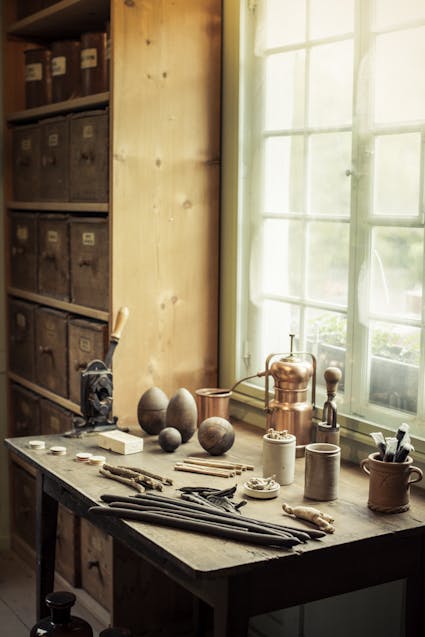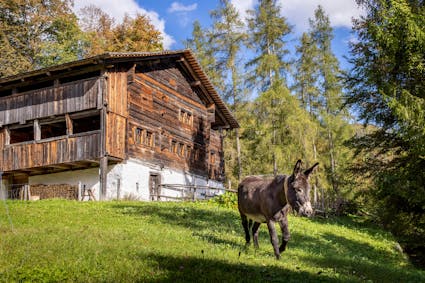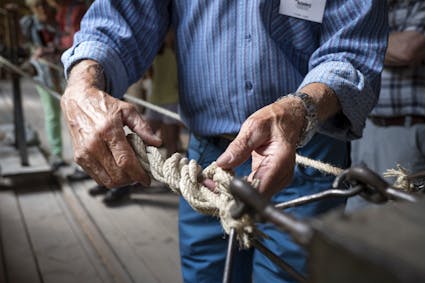Birth, marriage, death
The three key events in a person’s life – birth, marriage and death – also held great importance in the past. Various thematic permanent exhibitions focus on these topics.
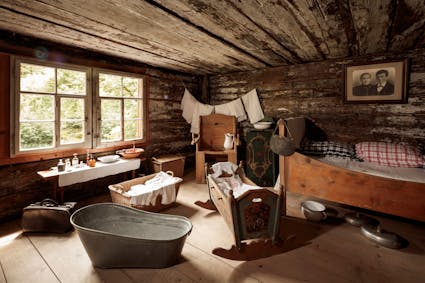
Where people gave birth
Dawn is just breaking. It is still early in the day and the mother is attempting to recover from the birth while her newborn cries in the little wooden crib next to her. Her older children play happily on the floor, carved toys strewn around. The mother is happy that her neighbour has brought clean laundry.
This is what the morning could have looked like in a room where a woman has just given birth, as re-enacted here in the dwelling from Wattwil SG (931). Even though doctors and hospitals existed in the 19th century, it was normal for women in rural communities to give birth at home, assisted by midwives or experienced female neighbours. Miscarriages were common and infant mortality rates were high, owing to a lack of medical knowledge and the hard everyday life that mothers had to endure.
The birthing room is also the lying-in room, as demonstrated by various items such as the midwife’s bag, the metal tub and the family cradle. Mothers were recommended to take things easy for at least a week. However, rural communities needed every worker they had, so mothers often had to recommence their work at home and on the farm shortly after giving birth.
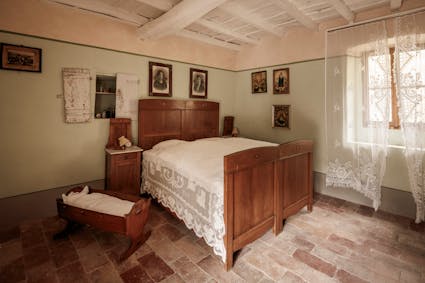
Getting married
Getting to know each other, falling in love, getting engaged, getting married, entering into holy matrimony on your own volition: today, it is normal in Europe for two people to get married of their own free will because they love each other. However, in rural areas of Switzerland, this was not the case for a long time.
The thematic exhibition in the farmhouse from Wila ZH (641) explains to visitors that a wedding was primarily a village event in centuries past. Marriage was a union forged for economic purposes, with the aim of safeguarding social status and the continued existence of the community. Boards and display cabinets depict the various stages of the journey to marriage, illustrated by clothes, objects and photographs: getting to know each other, the proposal, the engagement and wedding attire, too. While the exhibition on the first floor of the house illustrates how the village community provided a framework for the various customs and rituals, from getting to know each other to the wedding celebrations, the threshing floor is where everything is being readied for the wedding celebration. After the wedding, the bride will leave her parents’ farm. As a result, everything she will need for the new phase in her life has been loaded onto the impressive wagon. The wagon, full of furniture, gifts and the bride’s dowry, is already ready and waiting on the empty threshing floor. This area has been cleared because it’s where the wedding celebration will be taking place on the next day.

Where people died
As soon as you reach the first floor of the house, you’ll hear the rhythmic sounds of someone praying the rosary in the adjacent room. Male and female relatives and village-dwellers fulfil their duty of holding a vigil over the body and praying for the deceased.
In the dwelling from Erstfeld UR (721), visitors are able to see a re-enactment of a room in the Catholic region of Central Switzerland, where a young girl has died. The rituals and traditions depicted are intended to help the person in question have a "good" death and make the grieving period easier for relatives to bear. Praying the rosary aloud is just one of many traditions followed by those of the Catholic faith when a loved one dies. Other customs, such as covering windows and furniture with white cloths, receiving sacraments associated with death, such as confession or the last rites, and displaying crucifixes, also serve to ensure the salvation of the deceased. In the 19th century, people in rural areas gave a good deal of thought to the notion of a "proper" death.
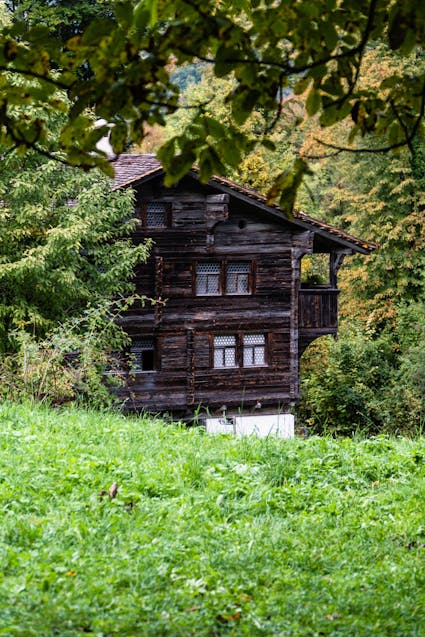
Ballenberg
Swiss Open-Air Museum
Museumsstrasse 100
CH-3858 Hofstetten bei Brienz
Opening hours
11 April to 27 October 2024
10 am to 5 pm daily
